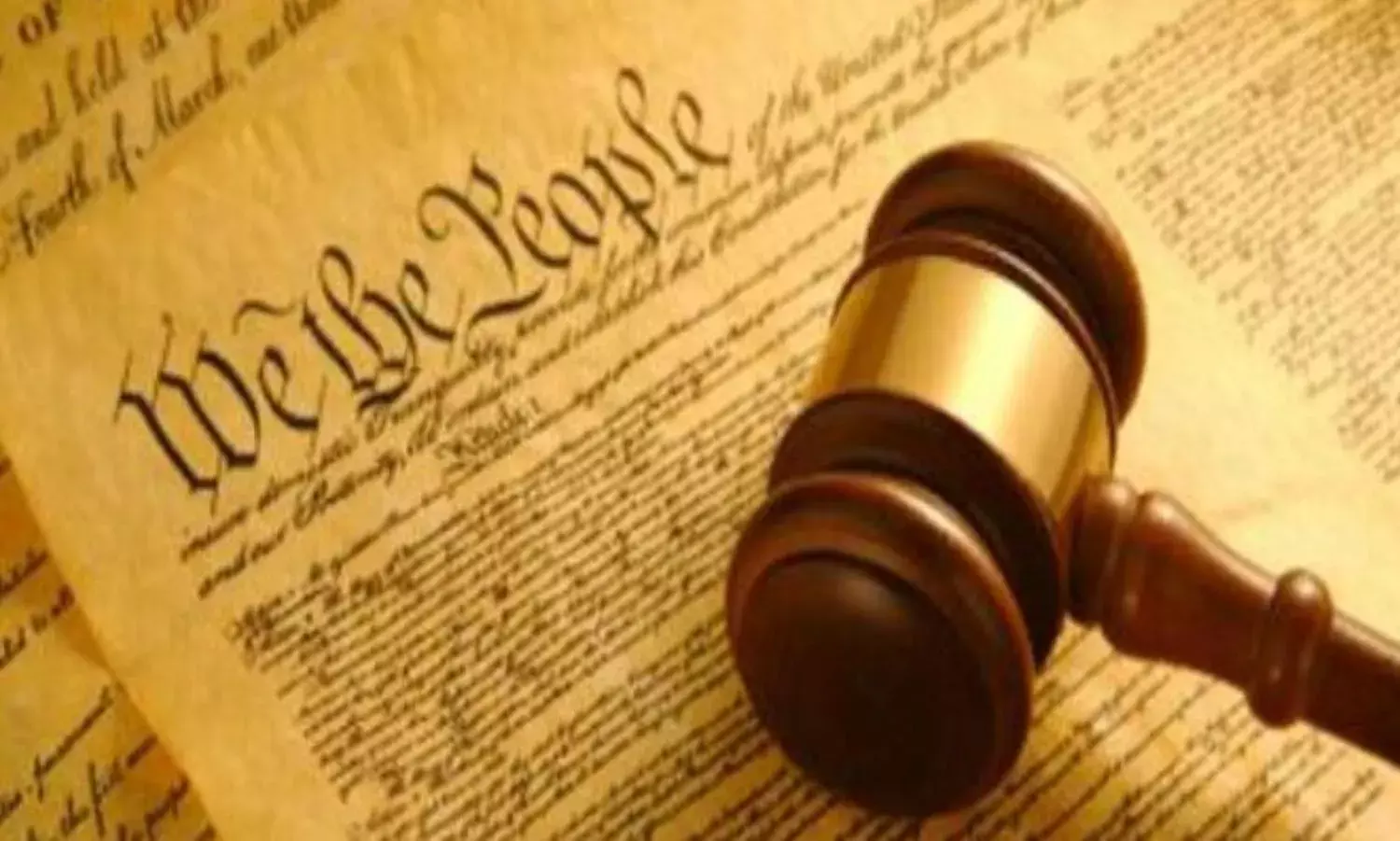The Constitution Busts the Campaign of Divisiveness
Important to remember relevant Articles of the Indian Constitution
In this 2019 elections it is important to recall the Constitution, because, many policies, actions and speeches by the ruling party, among others are being flagrantly violated.
Take for example the question of migrants and citizenship.
The debates in the Constituent Assembly on the Fundamental Rights and the less binding Directive Principles have been largely forgotten or misinterpreted especially by the political class. For example, the Constitution in Article 5 lays down the right to Citizenship to those (a) who was born in the territory of India; or (b) either of those parents were born in the territory of India; or (c) who has been ordinarily resident in the territory of India for not less than five years immediately preceding such commencement shall be a citizen of India. But this is relevant for those domiciled in India. There was a similar Article 6 about those migrating from Pakistan to India.
However, from 1951 there was pressure to have more stringent laws on migrants. One widely used rule was that their should be some limit: 1) For returning migrants; 2) imposing a limitation on the number of migrants. CJI Ranjan Gogoi who is an Assamese himself pushed the National Register of Citizens. As many as 16,800 enumerators were chosen. Since a large number of the migrants were Muslim there was strong resentment by the Hindu Assamese and tribals. The problem is that roughly 4 million migrants or thereabouts are in this area.
The adjoining land mass are Bangladesh and Myanmar, neither of whom will be willing to settle Indian migrants. BJP leaders are using this for anti-Muslim propaganda. Amit Shah, recently referred to the migrants as “termites.” But it is not easy to separate Muslims from Hindus. Some of the earlier migrants were Hindus. Now Amit Shah is propagating that the NRC should be applied throughout the country. No Constitutional Fundamental Right permits this.
The Hindutva lobbies had earlier questioned conversion, especially in the case of Christians who were accused of illegal conversions. But Article 25 of the Fundamental Rights states: “(I) Subject to public order, morality and health and to the other provisions of this Part, all persons are equally entitled to freedom of conscience and the right freely to profess, practice and propagate religion.”
In Article 25(2) Explanation II—“In sub-clause (b) of clause (3) the reference to Hindus shall be construed as including a reference to persons professing the Sikh, Jain or Buddhist religion, and the reference to Hindu religious institutions shall be construed accordingly.
This means clearly that those professing the Sikhs, Jains and Buddhist religions come within the building of the Ram Mandir, so Buddhists etc. cannot be barred from entry and worship as laid down in the Fundamental Rights.
There has been much anger and even killing in various parts of the country on cow slaughter. What is the Constitutional position? Not that which is commonly understood.
Then there is the question of cow vigilantism, where so many lynchings have taken place, especially of the minorities and the poor. Article 48 of the Directive Principles in the Constitution lays down: “Organisation of agriculture and animal husbandry.—The State shall endeavour to promote agriculture and animal husbandry on modern and scientific lines and shall, in particular, take steps for preserving and improving the breeds, and prohibiting the slaughter of cows and calves and other milch and draught cattle.”
Article 48 therefore does not ban cow slaughter on religious grounds but to “in particular, take steps for preserving and improving the breeds, and prohibiting the slaughter of cows and calves and other milch and draught cattle.” The Constitution clearly did not support cow slaughter but to improve the breeds of milch and draught cattle. What are milch and draught cattle? Milch cattle can include the buffalo, mithun and yak. Why are these slaughtered?
Article 39. Certain principles of policy to be followed by the state—The State shall, in particular, direct its policy towards securing—
(b) that the ownership and control of the material resources of the community are so distributed as to subserve the common good;
(c) that the operation of the economic system does not result in the concentration of wealth and means of production to the common detriment.
(d) that there is equal pay for equal work for both men and women;
(e) that the health and strength of workers, men and women, and the tender age of children are not abused and that citizens are not forced by economic necessity to enter avocations unsuited to their age or strength.
Article 44. Uniform civil code for the citizens.—The State shall endeavour to secure for the citizens a uniform civil code throughout the territory of India.
The Constitution of India was promulgated under the Government of India Rules, 1935. Under the GoI 1935 Rules those seeking membership of the Constitution had to pay a certain amount of taxes, including income tax and land tax. The men paid most of the tax, as women were not rich enough to be taxed. So the middle class and particularly women were merely about 14 members in the Constituent Assembly. Only one Leftist Somnath Lahiri was a member and much of the time he was evading the British. The saving grace was that Dr. Balasaheb Ambedkar was appointed the Chairman of the Drafting Committee.
How many of these Articles are visibly empowering our people today?





